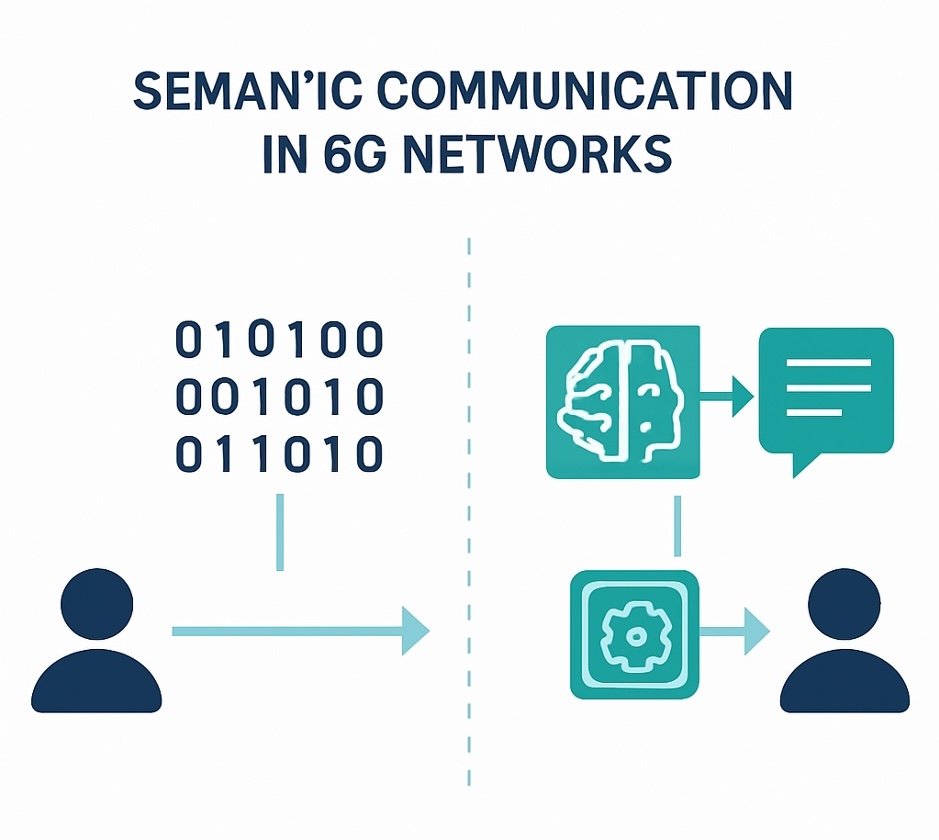Semantic Communications: Rethinking How Networks Understand Meaning
The telecom industry is rapidly evolving toward 6G, and I’ve been observing a fundamental paradigm shift taking place. We’re moving beyond simply transmitting raw data to something far more profound: transmitting meaning itself. This transformation is embodied in what I believe is one of the most revolutionary concepts emerging in next-generation networks: Semantic Communication.

Traditional communication models, like Shannon’s theory, have always focused primarily on the accuracy of bit transmission from sender to receiver. But in today’s world, dominated by AI, IoT, and immersive experiences, this approach is becoming increasingly insufficient. The challenge isn’t just about transmitting data anymore; it’s about transmitting the right data, with the right context, at precisely the right moment.
At its core, semantic communication represents a model that prioritizes understanding over mere accuracy. Rather than sending every bit of information, semantic systems intelligently transmit only what’s necessary for the receiver to reconstruct the intended meaning. This represents a profound shift in how we conceptualize network communication.
Consider this practical example: a device needs to send the message “I need a glass of water.” In classical communication, this entire sentence would be encoded, transmitted, and decoded bit by bit, regardless of context. But in a semantic communication system, if the context already indicates the user is thirsty, simply transmitting the word “glass” might be sufficient to trigger complete understanding. This approach is inherently context-aware, knowledge-driven, and enhanced by artificial intelligence.
The necessity for semantic communication becomes increasingly apparent when we consider its practical benefits. It substantially reduces redundant data transmission, which conserves both bandwidth and energy, critical resources in our increasingly connected world. For latency-sensitive applications like critical IoT systems, autonomous vehicles, and holographic communication, this efficiency translates to meaningful performance improvements. Furthermore, it enhances machine-to-machine understanding, enabling more intelligent edge networks, while aligning communication more closely with human-like reasoning patterns, making our interactions with technology more natural and efficient.
When we examine these advantages collectively, it becomes evident that semantic communication isn’t merely a beneficial addition to our technological toolkit; it represents a fundamental paradigm shift in communications technology.
The enabler of this transformation is undoubtedly artificial intelligence, particularly in domains such as natural language understanding, knowledge graphs, semantic representations, and the ability to learn shared context between sender and receiver. When integrated with Digital Twins and Cognitive Networks, semantic communication becomes even more powerful, allowing systems to predict, understand, and take proactive action rather than simply reacting to inputs.
At Digis Squared, we view Semantic Communication as a cornerstone of future AI-native networks. I believe it will fundamentally reshape how we design, operate, and optimize telecom systems, not only by increasing efficiency but by making networks truly intelligent.
As Head of Product, I find myself increasingly asking a question that challenges conventional thinking: What if our networks could understand why we communicate, not just what we communicate? This perspective shifts our focus from merely building faster networks to creating smarter, more meaningful ones that truly understand human intent.
Author: Mohamed Sayyed, Head of Product at DIGIS Squared
